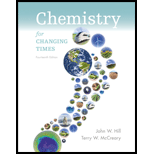
Concept explainers
(a)
Interpretation:
Out of Pangamic acid, Carnitine and Orotic acid, water soluble compound or fat-soluble compoundsshould be identified.
Concept Introduction:
Pangamic acid is a ten-carbon molecule containing amino group in it and having a molecular formula It is also described as d-gluconodimethylamino acetic acid.
It is also described as d-gluconodimethylamino acetic acid.
Carnitine is a seven-carbon molecule containing tertiary amino group in it and having a molecular formula Thus, it is quaternary ammonium compound mostly involved in
Thus, it is quaternary ammonium compound mostly involved in 
(b)
Interpretation:
Out of Pangamic acid, Carnitine and Orotic acid, vitamin should be identified.
Concept Introduction:
Pangamic acid is a ten-carbon molecule containing amino group in it and having a molecular formula It is also described as d-glucono dimethyl amino acetic acid.
It is also described as d-glucono dimethyl amino acetic acid.
Carnitine is a seven-carbon molecule containing tertiary amino group in it and having a molecular formula Thus, it is quaternary ammonium compound mostly involved in metabolism. Orotic acid is a 5-carbon molecule containing amino group in it. It has a pyrimidine ring and having a molecular formula
Thus, it is quaternary ammonium compound mostly involved in metabolism. Orotic acid is a 5-carbon molecule containing amino group in it. It has a pyrimidine ring and having a molecular formula
Want to see the full answer?
Check out a sample textbook solution
Chapter 17 Solutions
Chemistry for Changing Times
- What is the name of the following compound? SiMe3arrow_forwardK Draw the starting structure that would lead to the major product shown under the provided conditions. Drawing 1. NaNH2 2. PhCH2Br 4 57°F Sunny Q Searcharrow_forward7 Draw the starting alkyl bromide that would produce this alkyne under these conditions. F Drawing 1. NaNH2, A 2. H3O+ £ 4 Temps to rise Tomorrow Q Search H2arrow_forward
 ChemistryChemistryISBN:9781305957404Author:Steven S. Zumdahl, Susan A. Zumdahl, Donald J. DeCostePublisher:Cengage Learning
ChemistryChemistryISBN:9781305957404Author:Steven S. Zumdahl, Susan A. Zumdahl, Donald J. DeCostePublisher:Cengage Learning ChemistryChemistryISBN:9781259911156Author:Raymond Chang Dr., Jason Overby ProfessorPublisher:McGraw-Hill Education
ChemistryChemistryISBN:9781259911156Author:Raymond Chang Dr., Jason Overby ProfessorPublisher:McGraw-Hill Education Principles of Instrumental AnalysisChemistryISBN:9781305577213Author:Douglas A. Skoog, F. James Holler, Stanley R. CrouchPublisher:Cengage Learning
Principles of Instrumental AnalysisChemistryISBN:9781305577213Author:Douglas A. Skoog, F. James Holler, Stanley R. CrouchPublisher:Cengage Learning Organic ChemistryChemistryISBN:9780078021558Author:Janice Gorzynski Smith Dr.Publisher:McGraw-Hill Education
Organic ChemistryChemistryISBN:9780078021558Author:Janice Gorzynski Smith Dr.Publisher:McGraw-Hill Education Chemistry: Principles and ReactionsChemistryISBN:9781305079373Author:William L. Masterton, Cecile N. HurleyPublisher:Cengage Learning
Chemistry: Principles and ReactionsChemistryISBN:9781305079373Author:William L. Masterton, Cecile N. HurleyPublisher:Cengage Learning Elementary Principles of Chemical Processes, Bind...ChemistryISBN:9781118431221Author:Richard M. Felder, Ronald W. Rousseau, Lisa G. BullardPublisher:WILEY
Elementary Principles of Chemical Processes, Bind...ChemistryISBN:9781118431221Author:Richard M. Felder, Ronald W. Rousseau, Lisa G. BullardPublisher:WILEY





